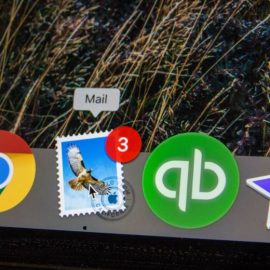

This article is an excerpt from the Shortform book guide to "Business Model Generation" by Alexander Osterwalder and Yves Pigneur. Shortform has the world's best summaries and analyses of books you should be reading.
Like this article? Sign up for a free trial here .
What makes a successful business model? What are the different types of business models?
A successful business model is one that creates, and over time, builds upon a competitive advantage. In their book Business Model Generation, authors Osterwalder and Pigneur discuss five different types of business models: 1) unbundled, 2) long tail, 3) multi-sided platform, 4) free, and 5) open.
We’ll take a look at the key elements of each of these formulas below.
Formula 1: Unbundled
Unbundled businesses split up (“unbundle”) their operations into three distinct business categories to increase efficiency: product innovation, customer relationship management, and infrastructure management.
Some business experts argue that businesses that offer services in one or more of these distinct categories can’t operate efficiently unless they unbundle. Further, they advise that businesses should focus only on one of these categories as their core service, and outsource the rest to specialized companies. As long as more than one of these activities coexists on a single business model, each of the elements will include conflicting priorities that will create limitations or “tradeoffs” across the business.
Businesses Focused on Product Innovation:
- Focus: This business category aims to create the most innovative product or service on the market.
- Strategy: Businesses focused on innovation need to hire talented designers and develop efficient systems to commercialize ideas quickly.
- Resources: Successful product innovation requires investment in research, development, and talented employees.
Businesses Focused on Customer Relationship Management:
- Focus: This business category aims to nurture long-term relationships with customers.
- Strategy: Businesses focused on customer relationships need to look beyond the value of single transactions and focus on the lifetime value of their customers.
- Resources: In addition to tailoring products and services to satisfy customers in each customer group, businesses need to invest heavily in developing their touchpoints and customer interactions.
Businesses Focused on Infrastructure Management:
- Focus: This business category aims to operate as efficiently and as cost-effectively as possible.
- Strategy: Businesses focused on infrastructure management adopt strategies that minimize costs and optimize efficiency wherever possible.
- Resources: Reliable and cost-effective infrastructures depend on economies of scale and standardized processes to keep costs down.
Formula 2: Long Tail
Long Tail businesses focus on creating a wide variety of diverse niche products and services for interested buyers—individually, each of these products sells very little, but the combined sales of all of the products generate high revenues. These models require cost-effective ways to manage large inventories, reach potential buyers, and facilitate transactions. Osterwalder and Pigneur suggest the following layout for Long Tail business models:
- Customer Groups: Focus on multiple niche customer groups as well as multiple niche suppliers—both groups are interdependent.
- Value Offer: Value comes from offering a wide range of niche products alongside a few mainstream products. Additional value comes from providing content production tools for users to co-create products.
- Profit Sources: Profit sources will come from combined sales across the platform, as well as paid advertisements.
- Critical Actions: Develop, manage, and promote the platform to acquire niche content suppliers and customers.
- Network: Focus on developing partnerships with both professional and amateur niche content providers. In addition, focus on partnerships that will make the platform more functional or attractive to both suppliers and customers.
Formula 3: Multi-Sided Platforms
Multi-Sided Platforms provide an infrastructure to enable direct interaction between two or more different but interdependent groups of customers. This pattern is most obvious in a marketplace such as Etsy—this business facilitates exchanges between buyers and sellers, and it requires participation from both parties to offer value and operate successfully. In other words, if sellers stopped listing items on Etsy, customers would see no value in visiting the site. If customers stopped shopping on Etsy, sellers would see no value in listing their products. The more active users that a platform can attract, the more value it can offer to both parties.
Osterwalder and Pigneur suggest the following layout for Multi-Sided Platform business models:
Customer Groups: Focus on a minimum of two interdependent customer groups.
Value Offer: Value comes from the platform—it facilitates efficient and cost-effective interactions between the customer groups.
Profit Sources: Each group produces a different revenue stream depending on the fees they pay to use the platform (for marketplaces, sellers usually pay subscription fees while buyers have free access).
Critical Actions: Develop, maintain, and promote the platform to ensure it meets the needs of individual customer groups.
Network: Focus on developing partnerships that will make the platform more functional or attractive to all customer groups.
Formula 4: Free
The Free business model pattern ensures that at least one customer group always receives value for free. While different patterns make the model financially viable, Free users are always financed by another part of the business model or by another customer segment. According to Osterwalder and Pigneur, there are three different types of free business models, based on where their revenue comes from: advertising, premium services, and continuing purchases.
Advertising
Multi-Sided Platforms encourage advertisers to subsidize free users. For example, the revenue that Google receives from advertisers enables Google users to make unlimited searches for free. The more free users, the more advertisers are willing to pay to access these users. Osterwalder and Pigneur suggest the following priorities for Free business models subsidized by advertising revenues:
Customer Groups: Focus on large customer groups to entice advertisers.
Value Offer: Value comes from providing a free product or service to customers. The resulting customer base will create value for advertisers.
Profit Sources: Profit comes from advertisers using the platform.
Critical Actions: Develop and maintain the platform to entice both customers and advertisers.
Network: Focus on developing partnerships that will make the platform more functional or attractive to all customer groups.
Premium Services
Premium Service models—Osterwalder and Pigneur refer to these as “Freemium models”—give customers the option to use the basic service for free or to pay for premium or additional services. The revenue from paying customers supports the costs incurred by the free users. For example, Evernote offers three plans to users: free, personal, and professional, and users can choose to upgrade and pay if the free service doesn’t meet their needs. Osterwalder and Pigneur suggest the following layout for this type of business model:
- Customer Groups: Focus on creating a large group of free users. Eventually, convert a portion of this group into paying users.
- Value Offer: Value comes from providing a free basic service to a large customer group, as well as offering a premium service to a smaller customer group.
- Profit Sources: Profit will come from customers paying for premium services. Calculate the conversion rate from free users to premium users to determine profit.
- Critical Actions: Develop, maintain, and promote the platform to ensure it meets the needs of both free and paying users.
- Network: Focus on developing partnerships that will make the platform more functional or attractive to both free and paying users.
Continuing Purchases
Continuing Purchases models—Osterwalder and Pigneur refer to these as “Bait and Hook” models—are characterized by cheap or free products that provide customers with instant gratification but create demand for future products and services. Although businesses initially lose money, they can easily cover the costs and make a profit from the recurring income they receive from these transactions. For example, coffee machines that require specific capsules to function can sell at a loss since customers will inevitably pay for the capsules so that they can use the machine. Osterwalder and Pigneur suggest the following layout for this type of business model:
- Customer Groups: Focus on large customer groups.
- Value Offer: Value comes from attracting customers with an inexpensive or free offer, which will lead to a necessary follow-up product or service.
- Profit Sources: Profit will come from multiple purchases of the follow-up product or service.
- Critical Actions: Focus on the production and delivery of follow-up products & services.
- Network: Focus on developing partnerships that will make the production and delivery of follow-up products and services more efficient.
Formula 5: Open
Businesses with Open business models create opportunities for innovation and efficiency by collaborating or co-creating with external partners. For example, NASA collaborated with TopCoder, Harvard Business School, and London Business School, to build an algorithm to assist manned missions. Osterwalder and Pigneur claim that there are two ways to create value through collaboration—businesses can either receive and integrate external resources to strengthen their own business models, or they can leverage their internal resources by supplying them for a fee.
For example, a business might supply external partners with intellectual property and profit from selling off any other resources that aren’t required internally. A business might receive resources from external partners, such as patents or research results, that contribute to the creation of innovative products and services.
(Shortform note: In addition to identifying physical and intellectual resources, businesses can also create value by leveraging their brand equity. For example, Xiaomi grew to become the world’s leading consumer internet-of-things company by forming alliances with partner firms. Xiaomi offered these partner firms significant value in the form of physical and intellectual resources such as research, development, and manufacturing resources, as well as brand capital—the firms benefited from access to Xiaomi’s millions of existing loyal customers without having to go through the long process of building a customer base and developing trust.)

———End of Preview———
Like what you just read? Read the rest of the world's best book summary and analysis of Alexander Osterwalder and Yves Pigneur's "Business Model Generation" at Shortform .
Here's what you'll find in our full Business Model Generation summary :
- The nine elements that make up any successful business model
- Different ways you can combine these elements to create business model patterns
- Techniques you can use to generate innovative ideas






